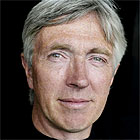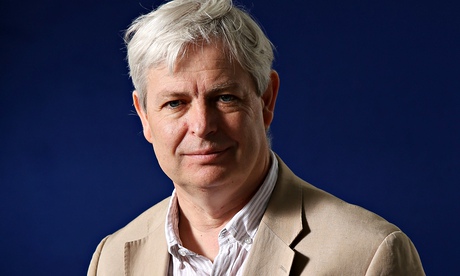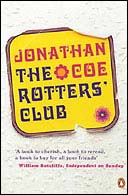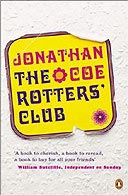Michael Owen, the narrator of alternate sections of What a Carve Up! and the apparent author of those parts written in the third person, has been a fan of Agatha Christie and Sherlock Holmes stories in his youth. When he visits Findlay Onyx, the elderly, camp private detective who has befriended him, he notices that his Islington bedsit is furnished exactly like the apartment of Thaddeus Sholto in Conan Doyle's The Sign of Four. The recognition is a symptom of his narrative self-consciousness.
"Mystery" is a word that Michael himself often uses. It signifies that he knows that he is a character in a plot. Indeed, he voices exactly this understanding near the end of the novel when he tells his new inamorata, Phoebe, "I thought I was supposed to be writing this story . . . but I'm not. At least not any more. I'm part of it."
This éclaircissement is more a confirmation than a surprise, for Findlay has already told Michael "the real mystery is you". Michael has been commissioned by the apparently mad but wealthy Tabitha Winshaw to write a history of her family, a collection of the nastiest and greediest and most successful individuals spawned by postwar British society. At the heart of his account, and the beginning of this novel, is the "mystery" of the disappearance of Godfrey Winshaw – the one decent member of the family – in a secret mission over Germany in 1942, and of Tabitha's deranged insistence that their brother Lawrence is to blame. While playing Cluedo with Joan, his friend from childhood and one of several women with whom he will fail to have an affair, Michael has had a premonition of his own involvement. He has been playing as Professor Plum, who, he realises, is the culprit: "I wondered what it would actually feel like, to be present at the unravelling of some terrible mystery . . . to find, all at once, that you were thoroughly and messily bound up in the web of motives and suspicions which you had presumed to untangle."
Michael was once a novelist, though as he begins his narrative he is a depressive recluse who has abandoned his career. In the middle of the novel he rediscovers a narrative fragment he wrote as a child called "The Castle of Mystery"; an awareness of mysteries is his narrative addiction. He keeps hearing the word. Joan uses it about his commission to write about the Winshaws. "So . . . are you going to tell me about this mysterious new project of yours?" He keeps using it himself of the odd events surrounding his attempts to catalogue the misdeeds of the Winshaws. When his own publisher has his house burgled and documents and photographs stolen, he is questioned by the publisher's formidable deputy: "The only effects of our conversation were to leave the mystery more clouded than ever." Riding a London bus to his next appointment with the hapless Findlay, he thinks of himself travelling "ever closer towards the next stage in a mystery . . ."
Made aware of "mysteries", the reader is alerted to the narrative significance of any otherwise unexplained detail. When characters smell jasmine, though there is none growing in any garden, we know it is a clue. When we hear that Lawrence wrote a note on the night of Godfrey's death containing the words "BISCUIT, CHEESE and CELERY" we realise that it cannot have been only an instruction for his supper. When Michael mentions twice that he and his parents never used to see his father's parents, we know that we will eventually discover the reason for this.
Mysteries are, in one sense, reassuring. For narrative mysteries, unlike mysteries in life, have solutions. Puzzles are set whose solutions a playful author has already envisaged. When Dickens died, he left The Mystery of Edwin Drood, his uncompleted novel, a mystery. What is the explanation of Drood's disappearance? We can at least be certain that there would have been an explanation. In life, mysteries tend not to have solutions, for there is no plot-maker (unless, like 18th-century novelists, you believe that God makes plots of all our lives). In the prologue to What a Carve Up! Michael ruminates on the mysterious death of his childhood hero Yuri Gagarin in an air "accident", and calls this "another of adulthood's ubiquitous, insoluble mysteries". Yet in the ending to this novel, Gagarin's fate is recalled and made part of Michael's story.
It is a mystery made into a final explanation, for explanation is always the other side of mystery.
John Mullan is professor of English at University College London. Join him and Jonathan Coe for a discussion on Wednesday 6 April in Hall One, Kings Place, 90 York Way, London N1 9AG. Doors open at 6.30pm, talk starts at 7pm. Entry costs £9.50 online or £11.50 from the box office: 020 7520 1490.









